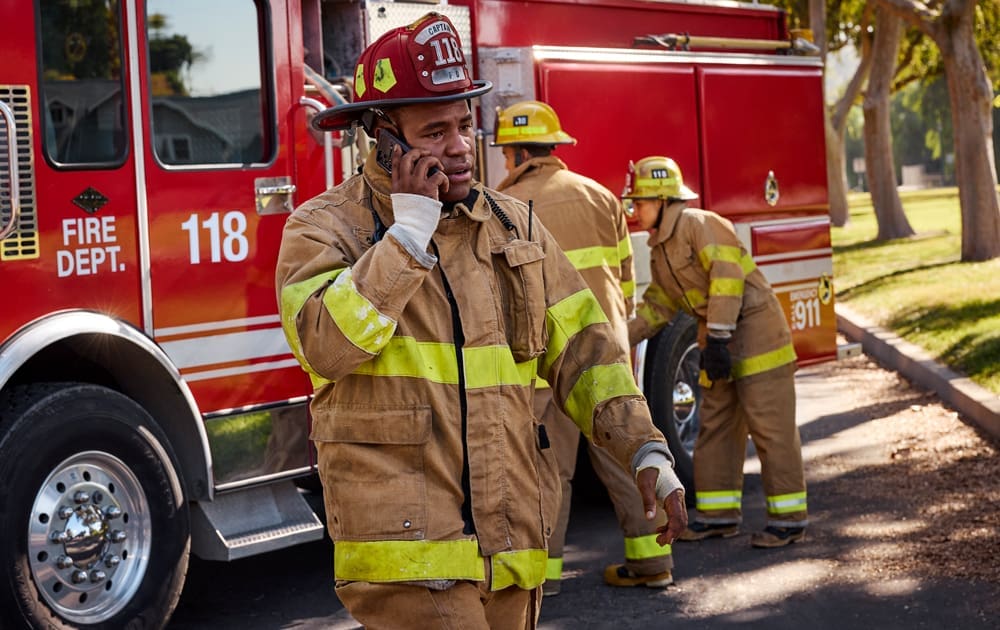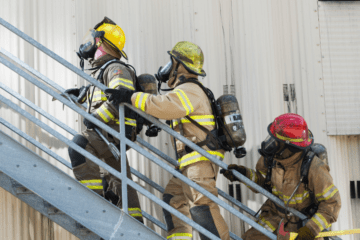In the response to the 9/11 attacks, first responders faced a failure. Not of courage or commitment, but a failure of communication. Radios couldn’t connect between departments, leaving firefighters and police officers from New York and surrounding states without a way to communicate during the crisis. Commercial wireless networks jammed. Lives were lost. Out of that tragedy came a clear, powerful mandate: we must never allow such communication failures to happen again.
That’s why FirstNet exists, and it’s why FirstNet has supported public safety’s response to every major crisis since coming online.
But don’t just take our word for it. Law enforcement and fire associations nationwide—like the Fraternal Order of Police, International Association of Fire Fighters, International Association of Chiefs of Police, International Association of Fire Chiefs and dozens of other public safety and state and local government organizations—have made it clear: they trust FirstNet.
Our commitment to public safety isn’t marketing slogans. It’s life-and-death stakes, and the voices of public safety are united: FirstNet works. FirstNet listens. FirstNet delivers.
A Model of Public-Private Partnership—That Works
FirstNet®, Built with AT&T stands as one of the most successful public-private partnerships in modern U.S. history, and perhaps the most mission-critical one to date. It’s a rarity. With more than 30,300 public safety agencies and organizations harnessing the network, and 7.5 million connections nationwide, FirstNet is the only dedicated wireless communications platform built from the ground up, with and for first responders. What sets FirstNet apart isn’t just what it delivers but how it is delivered.
When the federal government created the First Responder Network Authority (FirstNet Authority) in 2012, it issued a clear challenge to the private sector: build a dedicated public safety network that’s resilient, secure, nationwide, and self-sustaining. Many said it couldn’t be done. Only one major wireless company answered the government’s call, and the partnership with AT&T launched in March 2017—in the first Trump Administration—putting America’s safety and first responder community first.
AT&T stepped forward, putting its money, its balance sheet, and its reputation in building world-class networks on the line.
Congress allocated $7 billion—raised through spectrum auction proceeds, not taxpayer dollars—to support the FirstNet Authority’s initial operations, network buildout, and dedicated 20 megahertz of Band 14 spectrum to public safety. Over the life of the contract, AT&T expects to spend $18 billion in sustainability payments to the FirstNet Authority in exchange for secondary access to Band 14.
This wasn’t just a leap of faith, it was a long-term investment in public safety. The result? FirstNet has become a backbone of emergency response in every state and territory, supporting first responders in every major crisis—from wildfires to hurricanes, to manmade disasters, large planned events and ceremonies, and school emergencies.
This is the free market working for the public good: clear vision, private execution, public accountability, and no cost to taxpayers.
FirstNet is more than a network. It’s a lifeline that helps first responders do what they do best every day—save lives. And it exists only because when others failed to step forward, AT&T stood up. This is not a responsibility AT&T takes lightly, nor one lawmakers can take for granted.
Accountability Is FirstNet’s Strength
FirstNet is not some repackaged slice of a commercial cellular network. It is a purpose-built emergency communications network with a dedicated core and always-on prioritization and preemption. Its performance requirements are set by public safety and the federal government, not profit margins.
FirstNet competitors often misrepresent government reports and oversight reviews as flaws, but here’s the truth: those reports are a feature, not a flaw. Because FirstNet is a public-private partnership, it’s subject to a level of oversight no commercial network withstands. The Office of Inspector General (OIG), Government Accountability Office (GAO), Federal Communications Commission (FCC), Congress, FirstNet Authority, and independent FirstNet Authority Board all provide ongoing, rigorous reviews. That means FirstNet is not only accountable to public safety, but also to the public.
When other entities offering services throttle firefighters responding to wildfires or leave customers stranded without service in the wake of devastating hurricanes, there is no rigorous public transparency or accountability as with FirstNet. Accountability ensures that when issues arise, they’re surfaced, addressed, and fixed.
Transparency builds trust, and unlike best-effort, commercial networks, we don’t just answer to shareholders — we answer to every law enforcement officer, firefighter, paramedic, 9-1-1 dispatcher and emergency manager who depends on this network every day.
Innovation Driven by Public Safety
What truly sets FirstNet apart is that it’s not just for public safety; it’s led by public safety.
From the earliest design stages to cutting-edge innovation that is solving problems for public safety, every decision has been shaped by direct input from first responders in the field. Nearly 1,200 new purpose-built cell sites and over 180 dedicated deployable assets have been added, not because of commercial viability but because public safety identified a need for them.
This is more than a “slice” of a best-effort, commercial network. It’s a dedicated, dynamic platform that evolves in lockstep with the missions it supports.
FirstNet is built to common global standards, meaning it’s interoperable with other wireless networks. We’re creating new tools to bridge previously siloed legacy radio systems to enable effective cross-agency collaboration and improve situational awareness. Additional AI-powered apps and smart devices are being field-tested and co-developed with law enforcement, EMS, and fire officials.
And because FirstNet is funded by annual sustainability payments made by AT&T, not taxpayer dollars, these innovations don’t drain the public purse—they reinvest value directly back into the communities that need it.
That’s the power of this public-private partnership; AT&T, the federal government, and the public safety community working together to make this system better every single day.
Don’t Break What’s Working—Reauthorize the FirstNet Authority
Right now, public safety’s vision for their network is reality. Congress has a critical opportunity to protect what’s been built by reauthorizing the FirstNet Authority. If lawmakers fail to act in the next year, they risk unraveling an entire program that’s proven, self-sufficient and helps to save lives every day. Reauthorization isn’t about politics; it’s about preparedness. It’s about keeping America’s public safety network strong, self-sustaining, and led by those who use it.
Let’s be clear: failing to renew the FirstNet Authority will shift decisions away from the firehouse and police station and into corporate boardrooms or political backrooms. It will open the door to products designed for the consumer market but dressed up in public service clothing. The purpose-built network is here, it’s working, and it’s trusted by those who run toward danger every single day.
Now the public safety community is urging Congress to do its part and reauthorize this rare modern policy success story. FirstNet is innovative. It’s accountable. And it doesn’t cost taxpayers a dime. Because when the call comes, FirstNet answers.
To learn more about FirstNet, visit www.firstnet.com.
FirstNet and the FirstNet logo are registered trademarks and service marks of the First Responder Network Authority. All other marks are the property of their respective owners.





